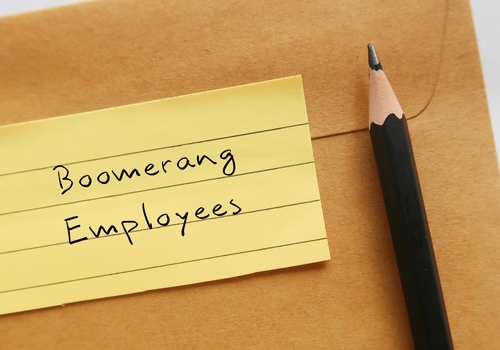A “boomerang employee” refers to an individual who returns to work for a previous employer after a period of absence. Hiring and rehiring former employees is increasingly common in the modern workplace, with some organizations actively encouraging and welcoming their return. Boomerang employees can bring back valuable experience, skills, and familiarity with the company culture, making them valuable assets upon their return.
The Advantages of Hiring Boomerang Employees
Organizations can reap several benefits from adopting a boomerang hiring approach—welcoming back former employees into their ranks. This strategic approach offers distinct advantages, including:
- Cost Efficiency: Rehiring past talent is a highly cost-effective recruitment strategy. When you bring back a former employee, onboarding is generally faster and simpler. The individual is already familiar with the company’s processes, policies, and possibly even some team members, which reduces the time and resources typically spent on training a new hire.
- Cultural Continuity: Employee turnover may disrupt the established organizational culture. In contrast, rehiring former employees ensures continuity in the workplace culture, as they are already familiar with the company’s values, mission, and work environment. This is especially beneficial for maintaining a cohesive and harmonious workplace, which helps with employee retention and recruitment.
- Accelerated Productivity: Former rehired employees generally require less time to get up to speed than new hires. They already possess a certain level of understanding of the job requirements and can quickly make contributions to projects. This can increase productivity and efficiency, especially in positions requiring specialized knowledge and skills.
- Filling Skill Gaps: Business needs to evolve, and rehiring former talent enables organizations to access a pool of individuals with a proven track record and the skills and knowledge required to address current challenges. This can be especially beneficial when filling roles requiring specific or technical expertise.
The Potential Downsides of Rehiring Past Talent
While rehiring former employees can offer notable advantages, it comes with potential drawbacks that organizations should carefully consider:
- Stagnation of Fresh Perspectives: One of the drawbacks of rehiring past talent is the potential for a lack of new and diverse viewpoints. While experienced employees bring valuable insights, relying solely on familiar faces may hinder innovation and the introducing of new ideas. Therefore, organizations must strike a balance between experience and the integration of new perspectives to remain competitive.
- Resentment among Current Employees: Rehiring former employees may create resentment among current employees, who may perceive it as favoritism. This can lead to a sense of inequality and affect team morale. Transparent communication about the reasons for rehiring and its value to the team can help alleviate such concerns.
- Mismatched Expectations: Time away from an organization can change the employee’s expectations and the company’s dynamics. Rehired employees may expect the work environment to be the same as when they left, while the organization may have evolved significantly. Effective communication and setting clear expectations are crucial to prevent potential conflicts.
Strategies for Successfully Reintegrating Boomerang Hires
Navigating the reintegration of boomerang hires requires a thoughtful and strategic approach. Consider the following key strategies to ensure a smooth and successful transition:
- Transparent Communication: Open and transparent communication is essential for a successful reintegration process. Communicate the reasons for rehiring and address any concerns among current employees. This contributes to establishing trust and upholding a favorable work environment.
- Assessment and Training: Before rehiring, it is important to conduct a comprehensive assessment of the former employee’s performance and identify any areas that require improvement. Provide the necessary training and support to ensure that the individual is equipped to meet the current job requirements.
- Onboarding Process: Although rehired employees may not require the same extensive onboarding as new hires, providing them with an updated orientation is essential. This includes information about changes in policies, procedures, and any new team members with whom they will be working.
- Performance Monitoring: Establish a comprehensive performance monitoring system to monitor the progress of rehired employees. Regular check-ins and feedback sessions can help promptly address issues and ensure a smooth transition.
Although rehiring former employees, known as boomerang hiring, can bring cost savings, maintain company culture, and boost productivity, organizations should be aware of potential drawbacks like limited new ideas and employee resentment. By using strong communication, evaluation, and onboarding methods, companies can effectively manage the reintegration process and capitalize on the advantages of bringing back experienced professionals.
Mike Szczesny is the owner and vice president of EDCO Awards & Specialties, a dedicated supplier of employee recognition products, branded merchandise, and custom awards. Szczesny takes pride in EDCO’s ability to help companies go the extra mile in expressing gratitude and appreciation to their employees. He resides in Fort Lauderdale, Florida.

